Jonathan Richman - No One Was Like Vermeer
Saturday, September 12, 2009
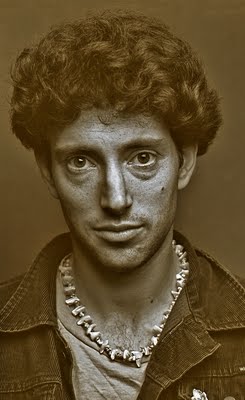 Back in the days of old Rembrandt Back in the time of Jan Steen All of them giants of shadow and light But no one was like Vermeer Some paintings smell of joy and sweat Some paintings plain look so fine And some are sad and passionate But Vermeer sends a chill up your spine Yeah Vermeer sends a chill up your spine Vermeer was eerie Vermeer was strange He had his own color range As if born in a more modern age They may be oh a hundred or so years ago What's this a ghost in the gallery Great Scot the Martians are here Why are his paintings so unlike the others Unlike the other ones so near No one was like Vermeer Back in the days of Rembrandt Back in the time of old Jan Steen All of the masters of shadow and light But no one was like Vermeer  Today I was finally able to take Rebecca and Lauren to see the show Vermeer, Rembrandt and the Golden Age of Dutch Art Masterpieces from The Rijksmuseum at the Vancouver Art Gallery. We were in town taking some of the last photographs in my studio (I am leaving it at the end of this month) of Emily Molnar who is the interim artistic director of Ballet BC. Rebecca enjoyed the show (She kept asking, "Is this an original?" while Lauren repeated quite a few times, "I am bored." None of the girls could have guessed that there was a song going in my head, over and over. It was Jonathan Richaman's No One Was Like Vermeer as played with his band the Modern Lovers. I went to see Richman in 1984 at the Railway Club and I managed to take this portrait.
In Defense Of Annie Leibovitz's Commercial Talent
Friday, September 11, 2009
 |
| Annie Leibovitz by A W-H |
In a separate suit, Art Capital sued Getty Images, claiming the photo agency had negotiated an improper contract with Ms. Leibovitz, which made it difficult for Art Capital to continue its efforts to sell the Leibovitz archive for $50 million. The New York Times, September 11, 2009
Reading about Ms Leibovitz’s financial travails these days has hit home with me. While I am not in default of a 24 million dollar loan my finances aren’t so hot either. In all that I have read about her problems I have not heard or read one word in defense of her talent.
Some years ago when I photographed and interviewed French photographer Elliott Erwitt I asked him about two photographers. Of Karsh he was caustic, “I think that man not only removes all character from his subjects but he then makes them look oily.” He was a bit kinder about Leibovitz when he said, “She is a good commercial photographer.” And then he repeated, “She is a good commercial photographer.”
It was not too long ago that I participated in a group show at the Exposure Gallery that featured photographs taken with either toy or very primitive box cameras. A recent Emily Carr College graduate (a female) with whom some of my pictures were sharing the wall, told me, “I admire you Alex. I could never be a commercial photographer. I could not photograph sewing machines.” I masked my anger and indignity and only the fact that the she was a woman prevented me from punching her in the nose.
There is a concept out there, particularly in Vancouver, that to be an artist there can be only two routes. There is the one of success and there is the one of failure. But either way one must never compromise one’s idea of what it is to be an artist. If anything, to be starving, confirms that one is an artist. One must never sell out.
Few of these successful artists or the starving ones ever stop to think that while there might not be anybody in Vancouver with the stature of an Edward Steichen, he should be seen as example of a photographer who was an artist (in May, 2006 one of his photographs sold for 2.9 million dollars at Sotheby’s ) and yet managed to shoot for magazines (Vogue) and be the director of photography for the US Navy in the Pacific Theatre during World War II.
I consider myself to be an artist (That is certainly most subjective and probably silly, too.) but when I talk to curators of local galleries, most don’t give me the time of day. I can almost hear them thinking, “This commercial hack. How dare he."
When stare at my many full-sized four-drawer filing cabinets stuffed with negatives, prints and transparencies that I have shot in Vancouver since 1975 I wonder what is to become of them. I know that there is a treasure there that encompasses many cultural and political events of our city and region. I keep filing stuff in preparation for making it easy for someone to dispose of them when I die.
During an opening of mine at a gallery a well known local collector told me how much he admired me. I told him that the best way to admire me was to buy some of my work. I then told him of the archive buzzards who haunt the gallery openings of old artists or old commercial photographers like me. I have seen them in action at memorials to dead photographers. They go to the widow and say, sensitively, “How would you like to pay homage to the memory of your husband? Why don’t you donate his archive to us?" The art collector had not heard because when I finished he said, “I would like you to contact this man who is in charge of the archives at Simon Fraser.”
Going back to Annie Leibovitz I must assert that I think that she is a very good photographer. I know because I am a good photographer. But I work alone. In fact I work alone because I cannot afford to pay anybody to help me. If Annie Leibovitz can and has an infinity of helpers that was and is her call and that did and should not diminish the quality of what she does.
Many photographers to whom I have talked to about Leibovitz in Vancouver, more often than not say, “ She is not really a good photographer. I could be as good as she is if I had her access." These photographers forget that because she was good, she obtained that access that, in this day and age, can be the difference between the good portrait and Facebook junk. Few have seen the young upstart sharing dark corners backstage with roadies in Robert Frank’s unreleased 1972 documentary of the Rolling Stones, Cocksucker Blues. Leiboviz has paid her dues in full.
Perhaps some of the lack of sympathy for the woman may have to do with her relationship with Susan Sontag. That anybody could have lured home a woman of such intellectual capacity and genius as Sontag must have many more talents besides that of being a good photographer.
Erwitt might assert in his deprecatory manner that Leibovitz is commercial. As far as I can see, that Leibovitz is good, is good enough for me.
The suit by Art Capital relating to the activities of Getty Images is what really is the news. Getty Images is appropriating and buying most of the images, (be they photographs or paintings) that represent a legacy of our world's culture. If they are allowed to become the monopoly they may one day be, we will have to pay some day to look (on the web) at an image of Leonardo's La Gioconda.
Brother Edwin's Friendship Quotient
Thursday, September 10, 2009
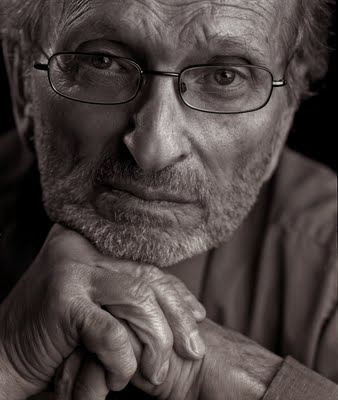 It was two years ago that Rosemary, Rebecca and I went to Mérida via Austin,Texas. We had gone to Austin to visit my old school, St Edward’s up on a hill. And I was particularly keen to meet up with Brother Edwin Reggio CSC who had taught me religion and the alto saxophone back in 1959. Before going to Austin I had called him up to enquire how he was. His answer was almost indignant in tone, “I am just fine, after all I am only 75.” It was only then that I realized that the old man who taught us religion when we were 16 was only 25. We were driving with our friend Howard Houston and his wife to take Brother Edwin to a famous barbecue restaurant called the County Line when Rebecca sprung a question at Brother Edwin on why it seemed that he and I got along so well. Brother Edwin’s explanation seemed to satisfy Rebecca but it initially went over my head. It went like this: "When your grandfather was in school and he was 16, I was 25. If you make that into a fraction it is 16/25 which equals 0.64. Ten years later that’s 26/35 or 0.74. When your grandfather was 50 that would be 50/61 or 0.81 and now we stand at 65/74 or 0.87. Rebecca as we both get older that difference in age becomes minimal as that quotient approaches 1 and eventually becomes 1.” For anybody who knows of calculus and geometry that is an asymptote curve that approaches zero at infinity, sort of. I understood later what Brother Edwin was driving at but Rebecca seemed to absorb the concept on the spot. 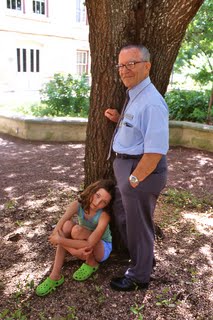 I met Abraham Rogatnick, top, left, in 1999 and we became friends. When he died a few weeks ago he was 85. That’s 67/85 or 0.78. I now finally understand why I have developed friendships with people that when I was younger I would not have even considered. This is wonderful and it is exciting to know that I am capable of making many new old friends. I explained this to Abraham and he simply said, “Of course. Didn’t you know this? ” No, I didn’t. But I am glad that Abraham and I became friends even if my grasp of mathematics was not to the equal of Brother Edwin.
Fragments Of Now
Wednesday, September 09, 2009
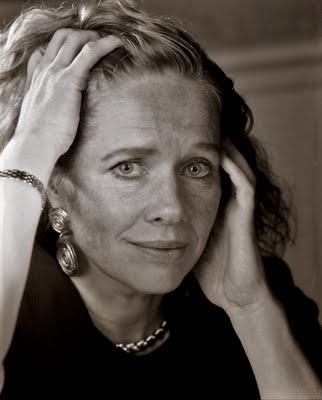
I had a Vancouver theatrical actress and director in my studio. Before we began shooting they were looking at some of the framed pictures on my studio wall. I told them, “ If you are going to be interested in any of them it’s going to have to be that one on the left.” " Who is she?” they asked, even after they were able to read the name, Liv Ullmann. I decided to be gentle and I did not pursue the issue, “She is an actress from Norway who collaborated with that famous Swedish director.” They did not ask me who the Swedish director was. I stopped right there.
Since I can remember my mother and my father spoke of movies and movie actors. The names remained in my memory because they often repeated their names or told me about them. One in particular stands out because it is a funny name. My mother might say of someone who was funny, “She reminds me of Zasu Pitts.”
Tonight Rosemary and I watched Archie Mayo’s 1946 film Angel on my Shoulder with Paul Muni, Claude Rains and the very sweet-faced Anne Baxter. It was difficult to see this film without remembering my mother telling me how she liked all the films of Claude Rains. Rains could play villains (indeed in Angel on my Shoulder he plays the fallen angel himself) and saints with equal aplomb. I do believe I have seen most of his performances. As I watched Paul Muni and noticed his expressions, his eyes, his eyebrows I could see where Humphrey Bogart might have gotten his inspiration. Muni’s gangster accent was as good if not better than Brando’s. Yet most of these actors and their names are largely forgotten. Still in my memory are my mother's favourites, Herbert Marshall, Ronald Colman, James Mason, Leslie Howard and especially Joseph Cotten. Can anybody who has ever seen Four Fingers ever forget those tense seconds (they seemed like hours) when Mason was trying to open that safe and not be caught?
For me memory is a carpet that is unrolling towards the future as it rolls up from the past. As an example in 1951 when I stared at photographs of dead American Civil War soldiers taken by Timothy O’Sullivan part of the shock of their immediacy may have been that the war was less than 90 years before. In school Waterloo and Napoleon weren’t ancient history. My teachers spoke of Maimonides, Empedocles, Sacco and Vanzetti, Thebes, Pindar, Edmundo Amicis, Clara Petacci and, General Burnside. Brother Hubert, CSC told us what a bitch Xantippe had been and how Socrates had volunteered to fight the Persians, even though he was an old man, so as to get away from her. It was in 1959 that Brother Dunstan, CSC told us of a fabulous English playwright called Harold Pinter. I still know who the man is and I have seen many of his plays.
My carpet from that past has receded and I have forgotten a few names. But I still manage to remember Ingmar Bergman while being aware of the films of Quentin Tarantino. I know and love the looks and acting skills of Scarlett Johansson without forgetting Monica Vitti, Romy Schneider and Claudia Cardinale.
My only conclusion is that we live in an age of carpet-roll remnants so our memories are now just fragments of now.
The Littlest Truck
Tuesday, September 08, 2009
 Some people think that the life of a freelance photographer is exciting. After all, the photographer meets and photographs celebrities, politicians and other important people. And when it’s not important people it is beautiful undraped women in the studio or in exotic locations. Does anybody ever think of freelancers shooting trucks, trains, commercial airplanes, train crews, and the retirement/roasts for the executives of Great Canadian Railroad companies? I did a lot of that for almost 25 years for CP Limited, Air Canada, Shell and many other companies. I worked on brochures for every university and technical institute of the Lower Mainland. Annual reports for many logging and energy companies took me to all parts of BC and several other provinces. In fact one annual report made me so much money that on an impulse (one I will regret for the rest of my life) I purchased a Maserati. This kind of photography took me to the tops of tall buildings. I climbed bridges and other dangerous structures and I never thought of the consequences of a misstep. I was stupidly young. I took pictures in the Yukon in January at 3500 feet where the minus 55 degrees Celsius froze the metal zipper of my parka to my mouth. Fortunately I never had the ambition of being in a war zone and was never attracted to the thrill that others might have felt at being shot at. I often wondered how some of the Hell’s Angels earned their keep to buy their expensive hogs. For the CPR I often took pictures of scalers who were engineers that precipitated small avalanches in gullies and banks near railroad tracks. This made it safer for trains. I also photographed the last caboose before it was retired. When I photographed train crews working on track repair and maintenance I ran into very large men who would turn their face when I pointed my camera at them. It was only after talking to their supervisor and clearing it with him as to why I was taking the photographs (the CPR newsletter) that some of the workers remained and posed while the bulk of them made a quick exit. Watching my puzzled look the supervisor explained the extracurricular activities of those that had left the scene. My finest moment happened in the late 80s at the Siska Bridge crossing over the Fraser River near Lytton, British Columbia. At the Siska Bridge the folks of the CPR went from one side of the Fraser to the other while those of the CN went on the opposite. It was a location that featured mountains, forests, a river, a canyon and two bridges. It was a microcosm, a sort of compact version of “Beautiful British Columbia”. The day in question, sometime in July was the hottest day of the year. The hottest day of the year in those parts (40 degrees Celsius) was always the hottest place in Canada. I positioned my Mamiya RB-67 on a tripod. I had a walkie-talkie. The CP train came. It was a carg train loaded with brand new Toyotas, Nissans and Mazdas. When the Toyotas began to cross the bridge I yelled into my transceiver, “Stop now!” The train stopped and I snapped a few pictures of the Toyotas with the backdrop of the Siska interchange. I yelled, “Move,” until I asked the engineer to stop for the Nissans and then for the Mazdas. How many people can boast of being able to stop a mile long train, not only once but three times? That was indeed my finest moment. The folks of the CPR after compensating me generously for my efforts made large prints of my pictures which were given to Japanese car executives. This industrial photograph for a Shell Canada newsletter was lots of fun to take. The truck was only about 6 ft long and the gentleman in the picture drove it (sitting inside the tanker side of the truck) to the location that I picked. It has always been one of my favourites.
Monday, September 07, 2009
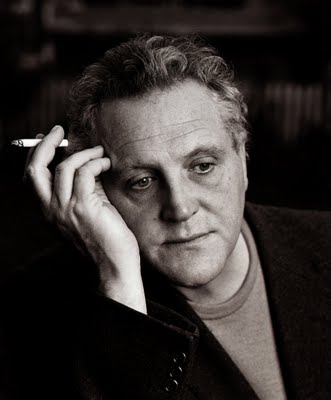
Michael Dibdin wrote 11 Aurelio Zen mysteries before he died in 2007. His principal protagonist Aurelio Zen had been born in Venice. Dibdin placed Zen only once in
Venice in what I think is the best crime novel ever set in that city, Dead Lagoon (1994). The story has a melancholy Zen return to Venice in the dead of winter and the resulting novel is an exquisite but doubly melancholy one!
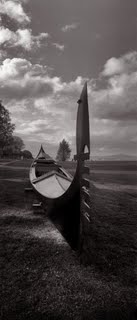
There is a cooking scene in Dead Lagoon that made me get up and buy the ingredients to prepare the simple dish described. It is a good recipe. Here it is as written by Michael Dibdin:
She smiled and turned away. There seemed to be something about her which did not quite fit the crisply professional clothes, some hint of intimacy, some chink in her armour.
‘I’m starving,’ she said. ‘I’ll put the pasta water on.’
Zen followed her out to the kitchen. On the table stood a stoppered litre bottle of red wine, a packet of spaghetti, a fat clove of purple-skinned garlic, a small jar of oil which was the opaque green of bottle glass abraded by the sea, a twist of paper containing three wrinkled chillis the colour of dried blood.
‘Aglio, olio e peperoncino,’ he said.
‘I told you it was nothing fancy.’
As she set the heavy pan on the stove and tossed a hail-flurry of coarse salt into the water, Zen suddenly understood the rogue element in her appearance. Her breasts moved waywardly inside the sheath of silk, belying the brisk message of her formal clothing with their seditious whisper.
Sunday, September 06, 2009
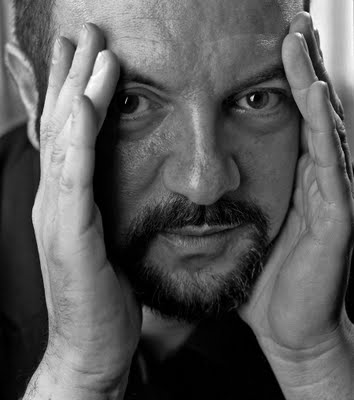
Canadians have a special relationship with Americans and Americans have a special one with the British. As an Argentine I find myself saying often that Italians and Argentines are primos hermanos or first cousins.
It would be impossible to remove the influence of the Italians in Argentina without leaving a void that would not only be so but it would affect the rest of what makes an Argentine and Argentine. From the moment I can remember being a person I would listen to the arguments, the singing and the loud talking of my Calabrian neighbours in my Buenos Aires neighbourhood of Coghlan. They seemed to live in the back garden and that is there where they had their noisy meals. The Calabrians included our neighbourhood barber and his son Miguelito who was my friend. Miguelito was el tano (Argentine Spanish nick name for Italians), I was el inglesito and Mario, our other friend was el alemán. We were all these nationalities and we spoke the appropriate language. But we were all proud of Alfredo di Stéfano ( La Saeta Rubia or Blond Arrow) who was an Argentine football player (we thought he was the best in the world at the time) who played abroad (Real Madrid) in the 50s. Both he and Juan Manuel Fangio where the Argentines of Italian extraction that made us proud in a world that still confused Brazil with Argentina and did not know which country spoke Portuguese.
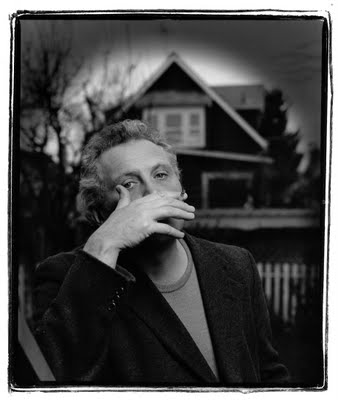
Because so many of our football players seemed to go to Spain or Italy I soon knew the meaning of a word used so often do describe them. The word oriundo (from Latin oriundus) was used every time I would check the soccer scores of the Italian league in the 50s. The word means originally coming from country … and it was used every time I checked the international soccer scores. The name for the Argentine Omar Sívori (he played for Juventus) cropped a lot. Sívori even managed to prove how Italian he was by playing for the Italian National Team in the 1962 World Cup.
Miguelito often told me how at his age 8 or 9 he drank wine (watered down with soda water) with his meals. I had no idea what he was talking about but I remembered him fondly five years ago when Rosemary, Rebecca and I were having pizza at midnight in the Buenos Aires. We were sitting at a sidewalk table on Cabildo (in my old neighbourhood) and I was sipping ice-cold moscato. Rebecca was curious and asked me if she could try it. I didn’t think twice and she had a sip. She thought it was delicious. Since she was 6 I told her not to mention the incident to her other grandmother.

To remove all vestiges of Italian cooking in Argentina would leave us only with sides of beef hanging from meat lockers.
While I have no Italian blood by the very fact that I am Argentine I feel a closeness, a fondness and an interest for all things Italian while I also accept that Argentina is where it is now (and economic disaster) because we inherited the bureaucracy of the English, the Spanish and the Italians.
When I read the many crime novels (by Italians (including a Sicilian), Americans and the British I notice that many involve the constant skillful sidestepping of bureaucracy by our Italian investigators or policemen. I feel quite at home reading about an Italy that is so much like Argentina and so alien to my new home of Canada.
By the time Italian crime/noir writer Carlo Lucarelli (first photo, above, left) came to Vancouver (June, 2002) I had read every Aurelio Zen novel written by the British/Irish writer Michael Dibdin, above, right. Both Dibdin and Lucarelli had a connection with the city of Bologna. Lucareli wrote about the city and Dibdin had taught English there. The usual crime novel expert, Robert Blackwood was not well so Alma Lee (the head of the Vancouver Reader’s and Writer’s Festival) called me to introduce them and to moderate a public lecture featuring the two writers.
It was a pleasure to make an appointment with the both of them (Lucarelli and Dibdin) at a Granville Island restaurant so that the writers could meet and we could discuss the possible theme of the lecture. It was then that both Lucarelli (I had not met him before) and I noticed that Dibdin (I had met him twice before and interviewed him once) was into food, coffee, drink and cigarettes. He was no longer the lean man that was my very idea of what his Venetian-born investigator who worked for the Italian Criminalpol based in Rome, looked like. Dibdin liked food and drink.
Paradoxically just about all the writers of Italian crime novels feature food with the exception of the leaner Lucarelli. Dibdin died 5 years later in Seattle and I have not doubt that it was probably some sort of heart attack.
In the course of investigating a disappearance in The Snack Thief ( Book 3 in the series by Andrea Camilleri) Inspector Montalbano interviews a “well-dressed seventy-year-old lady in a wheelchair.” When the interview is over, the woman invites the inspector to lunch:
“Well signora, thank you so much…”the inspector began, standing up.
“Why don’t you stay and eat with me?”
Montalbano felt his stomach blanch. Signora Clementina was sweet and nice but she probably lived on semolina and boiled potatoes. “Actually, I have much to – “
“Pina the housekeeper is an excellent cook, believe me. For today she’s made pasta all Norma, you know, with fried eggplant and ricotta salata.”
“Jesus!” said Montalbano, sitting back down.
“And braised beef for the second course.”
“Jesus!” Repeated Montalbano.
“Why are you surprised?”
“Aren’t those dishes a little heavy for you?”
“Why?” I’ve got a stronger stomach than any of these twenty-year-old girls who can happily go a whole day on half an apple and some carrot juice. Or perhaps you’re of the same opinion as my son Giulio?”
“I don’t have the pleasure of knowing what that is.”
“He says it’s undignified to eat such things at my age. He considers me a bit shameless. He thinks I should live on porridges. So what will it be? Are you staying?
“I’m staying,” the inspector replied decisively.
My favourite writers of crime novels based in Italy are Michael Dibdin (British/Irish with a short residence in Vancouver), Donna Leon (New Jersey), Iain Pears (England), Carlo Lucarelli and of late the Sicilian Andrea Camilleri. This latter writer I have known for some time but I chose to ignore the fact and I had never read a novel of his until most recently.
I finally discovered Andrea Camilleri by two unconnected events that include my bass playing neighbour Patricia Hutter and my friend John Lekich.
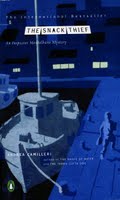
The former has borrowed all my Donna Leon and Michael Dibdin books. She has gone crazy for things Italian (a sample of this endearing craziness is the money she must have spent to buy her 17th century Italian bass, Nicolo). A couple of weeks ago, knowing that I share her love for all things Italian she left at my front door The Snack Thief by Andrea Camilleri.
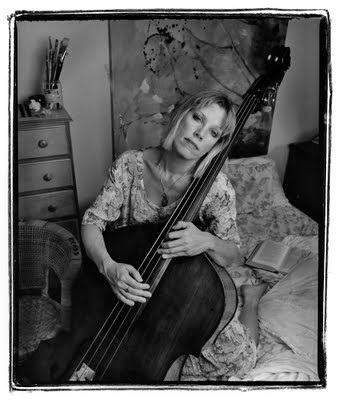
A few days later I invited my friend John Lekich to attend a screening of an episode of Il Commissario Montalbano which is an extremely successful Italian TV series. There have been 18 of them starting in 1999. The Istituto Italiano di Cultura Vancouver has been screening these series from June to September. I somehow caught on before the last screening last Tuesday that the Montalbano TV series was based on the crime novels of Andrea Camilleri.
Of the TV installment (1 hr, 45 minutes) that John Lekich saw I can only stress that it was better than anything from England including the Inspector Morse series.
Somehow I will have to find a way of acquiring the other 17 in the series and Perhaps Patricia, Nico and I can watch them.
Addendum:
The scan featuring the inside cover page of a book, called Carretera Central – “Vía Emilia” featuring stories by Bologna-based Italian writers (translated into Spanish) including one by Carlo Lucarelli. The book was given to me by Lucarelli who was delighted to know that I spoke and read Spanish. The dedication mentions a refrigerator. Let me explain. For many years when I photograph people I always give them at least one Polaroid. I always tell them to stick it their refrigerator with a fridge magnet. Polaroids are no longer made but I sometimes use a Fuji version which I affectionately call a Fujiroid. Perhaps soon some subject of mine might remember me because of one.
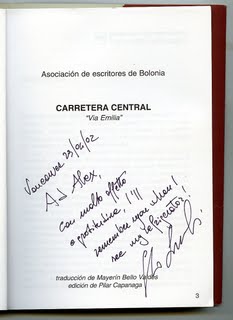
As for The Snack Thief by Andrea Camilleri (which features Inspector Montalbano) what I can I possibly add to the equivalent pleasure of suddenly discovering Reginald Hill’s (10 plus novels) and having the opportunity to read them all one after another?
And finally it is almost impossible not to be tempted by the almost weekly cultural offering (most often free, too) by the Istituto Italiano di Cultura Vancouver. It is preposterous that Great Britain, the US and France all have a much smaller cultural presence in Vancouver. How do these Italians do it? Where do they get their funding? And they have been doing it for a long time. Read the previous post called The Italians Part I
|





















